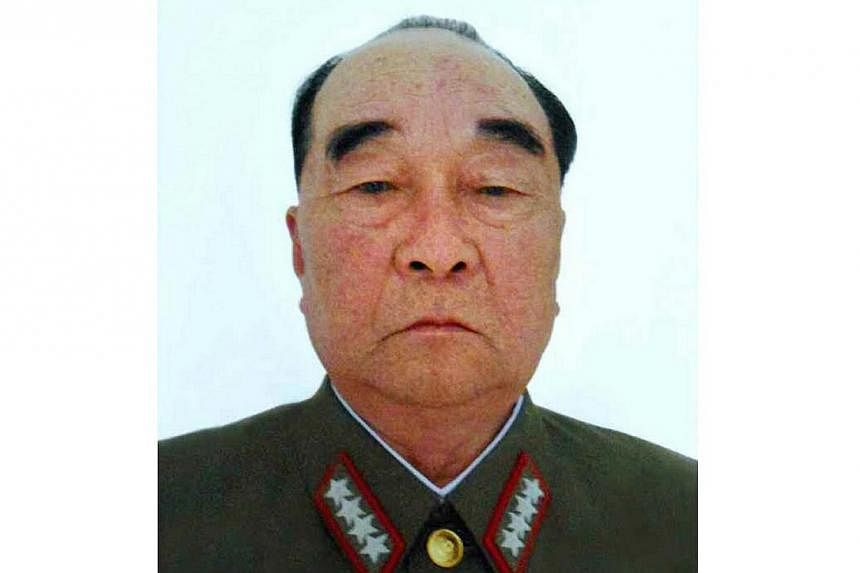SEOUL (AFP) - A powerful North Korean general who Seoul believes was behind the sinking of a South Korean warship and the shelling of one of its islands in 2010 has died, state media said Monday.
Kim Kyok Sik died on Sunday of respiratory failure while suffering from an unidentified type of cancer, according to Rodong Shinmun, the newspaper of the North's ruling Workers' Party. He was 77.
"The comrade served in very important positions... in the military for a long time, making great contributions to firmly protect our socialist motherland," it said.
The four-star general was named by South Korea as being the operational commander behind the sinking of the Cheonan navy corvette in March 2010 and the shelling eight months later of the border island of Yeonpyeong.
A South Korean-led investigation involving a team of international experts concluded the Cheonan was sunk by a North Korean submarine torpedo and Seoul cut trade and aid links to Pyongyang in response.
Pyongyang has always denied any involvement in the incident, in which 46 South Korean seamen died. The Cheonan was carrying 104 personnel when it sank near the disputed Yellow Sea maritime border between North and South Korea.
However, the North was unapologetic about the shelling in November 2010 of Yeonpyeong island, in which two South Korean civilians and two soldiers were killed, sparking brief fears of a full-scale conflict.
Kim Kyok Sik was in charge of the 4th Corps in Hwanghae Province near the western part of the border with the South at the time.
He went on to serve as the North's defence minister from 2012 to 2013 and later as the chairman of the joint chiefs of staff.
In recent years, he was occasionally seen accompanying North Korean leader Kim Jong Un during his "field guidance" visits to military facilities.

